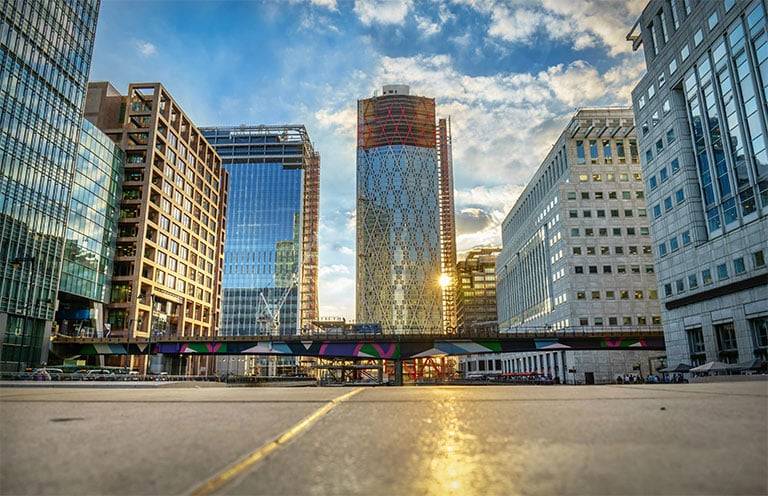The Rise of Canary Wharf
Canary Wharf’s ambitious plans in the 1980s to transform abandoned warehouses into a modern financial district were catalysed by the deregulation of London’s financial industry under then-Prime Minister Margaret Thatcher. Renowned architects such as Norman Foster were commissioned, and international banks such as Morgan Stanley, Lehman Brothers, Credit Suisse, and Citigroup flocked to the burgeoning district. Today, more than half of the tenants in Canary Wharf’s 30 office buildings are in the financial services sector.

The Decline of Canary Wharf
In the first quarter of 2023, the duration of office leases has almost halved since 2019. The nickname “Tower of Doom” for HSBC’s 200-meter tower may prove to be a prophetic warning for the entire financial district. The Canary Wharf Group, a joint venture between Canadian real estate firm Brookfield and the Qatar Investment Authority (QIA), is now under even more pressure to reinvent the 40-acre conglomerate of office towers, luxury apartments, restaurants and shops. HSBC’s departure is not the only high-profile exodus. International law firm Clifford Chance is also leaving the former docklands.
Shifting Paradigm
Thanks to digitization, banks no longer need huge trading floors, preferring smaller, well-equipped office spaces instead. HSBC’s move to the downsized former British Telecom headquarters, which is half the size of its current Canary Wharf headquarters, is an example of this trend.
The Impact of Remote Work
Amid changing office needs and a surge in remote work due to the pandemic, offices remain empty. Canary Wharf still has the appearance of a satellite city despite having three rail lines, including the brand-new Elizabeth Line. It houses 3,500 residents and various amenities, but most of its 120,000 office workers leave in the evening. High rents, from 2,700 to 9,000 Swiss francs for luxury apartments, put it out of reach for many.
Your Wealth, Our Priority: Altoo's Consolidation Power, Secure Document Management, and Seamless Stakeholder Sharing for High Net Worth Individuals. Preview Platform.
The Transformation of Canary Wharf
Shobi Khan, CEO of the Canary Wharf Group, has significantly reduced the consortium’s financial dependence. Office lettings, which once accounted for 95% of income, now account for around 74%. Retail and leisure activities account for nearly 20% of revenue, while residential rentals contribute about 8%. Khan envisions attracting more residents and life science companies, and aims to cater to these industries alongside technology and new media. The challenge, however, is to meet evolving environmental, technological, and workplace standards.










